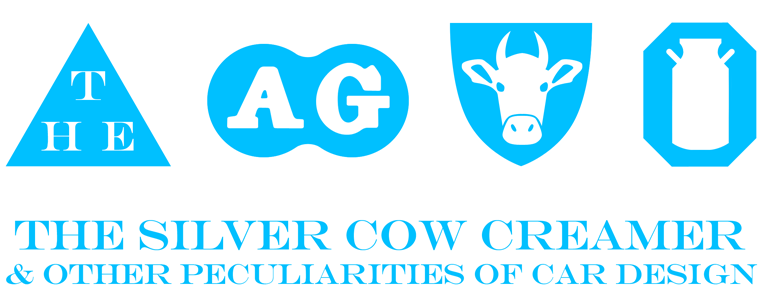SPOTTING A classic at the Goodwood Revival is not a hard task, but even this one stood out. This annual event in England hosts a celebration of racing from before the introduction of aerodynamic aids in 1966. This spectacular weekend is a pilgrimage for petrolheads, but that date is significant, for it means one of Formula One’s most prominent names is often absent: McLaren.
Since the Monaco Grand Prix of that year when McLaren entered their first car to race, some of the world’s most talented people have sat in their seats. And the former chief engineer Gordon Murray is one of them, and in the hope that he forgives my playing pap for the day, I spotted him driving off in his brainchild, the McLaren F1. Even in a field full of Ferraris it was quite the sight. I remember my heart pounding when, twenty years ago in Sussex, I watched over my shoulder as a silver one slid up behind our Citroen BX, overtake, and all but disappear in the time it took to turn my head around.
It is hard to find something new to say about this phenomenal car. Like Lilliputians throwing ropes around Gulliver, so every journalist has tried to shackle their impression of this incredible feat. I was going to remind you that through McLaren’s partnership with Honda and Murray’s experience in an NSX that he had pushed for the Japanese to provide the engine for the F1. Rumour has it a V14 was even discussed. But in what must be the most baffling decision made by company that often does the baffling (folding hard-top CRX anyone?), Honda declined and Murray turned to BMW.
But before I go in too far, I note Wikipedia has that base covered. What they don’t mention is the door mirror: when the F1 first appeared, the mirrors were on the A-pillar; in production they moved to the door. On all but one, that is: one customer was so adamant to have them as per the original concept that the pillars had to be reinforced with extra carbon-fibre to prevent twisting at Vmax. This made the car heavier; Gordon was not pleased.
Of every device, innovation, and achievement, headlines have been written and benchmarks set. Everything about the F1 was custom-made and convergent towards the same goal of creating the ultimate road car (and I am expecting similar clarity from Apple with their foray into transport -not just cars, I suspect). The three-seat layout; the 3.2s 0-60 time; the gold-plated engine-bay; the butterfly doors (thank-you, Toyota Sera); the 243 mph top speed; the million-dollar asking price. Before you even saw it the F1 had rearranged everything you expected from a car: higher regard for it would not be possible, and the single-mindedness of its objectivity is comparable to the pursuit of perfection Toyota sought in creating the first Lexus.
Such stats set up expectations that are impossible for any stylist to fulfill, which is ironic, because in many way the McLaren is a very grounded and logical machine. But it feels as though the facts are greater than the form. The plan shape of the body is straight to reduce drag; the cab is far forward with a low cowl to improve visibility; the car is small to reduce weight. Each attribute is there for a reason. If you were to start with a blank page today with the same goal, the result probably wouldn’t look that different. Drop a couple of cylinders perhaps in favour of a hybrid, use OLED lights front and rear; that’s about it.
Instead I have to cross myself, and hope that Peter Stevens is not reading this. Stevens is the designer of this car, or stylist, as Murray would I expect insist. In the F1 Stevens has created one of the most memorable and timeless shapes in automotive history. It is perfect. Kind of freaky perfect in that it refuses to age.
Traces of his experience at Lotus is found in the abrupt tail (later seen on the Elise), with smoothly integrated volumes not unlike the 1989 Isuzu 4200R concept. The F1 is crisp, modern, pert, lithe, with a timelessness inextricably linked to the single-minded, complete vision. It is exactly what this car should and needs to look like.
So I feel it sacrilegious to say that it fails to quicken my pulse. Such is the perfection of the F1, I realise the fault must lie with me, that there is something I have missed, a lesson I have not learned. I keep looking at it, willing myself to fall on my knees in adulation, yet nothing comes. Perhaps I should not confuse clean design with perfect design, for the F1 is very clean, with the drama coming from the package, not extrovert design details. The Mercedes-Benz 300SL Gullwing had eyebrows over the arches; the Countach was Stratos Zero reincarnate; the Testarossa had those strakes. Yet the F1 is so essentialist that the superfluity of extraneous details and emotion is rationalised out.
It is also a product of its time. When, in the nineties, emphasis on the wheels had yet to mature -an essential part of car design today -a trait that also leaves the Honda NSX feeling too prim and polite. In the eternal struggle between heart and head, this car was conceived from the ground up with the grey matter. Such single-mindedness leaves the McLaren F1 almost Japanese in execution. It is also perhaps the most excellent example of British esotericism.

























